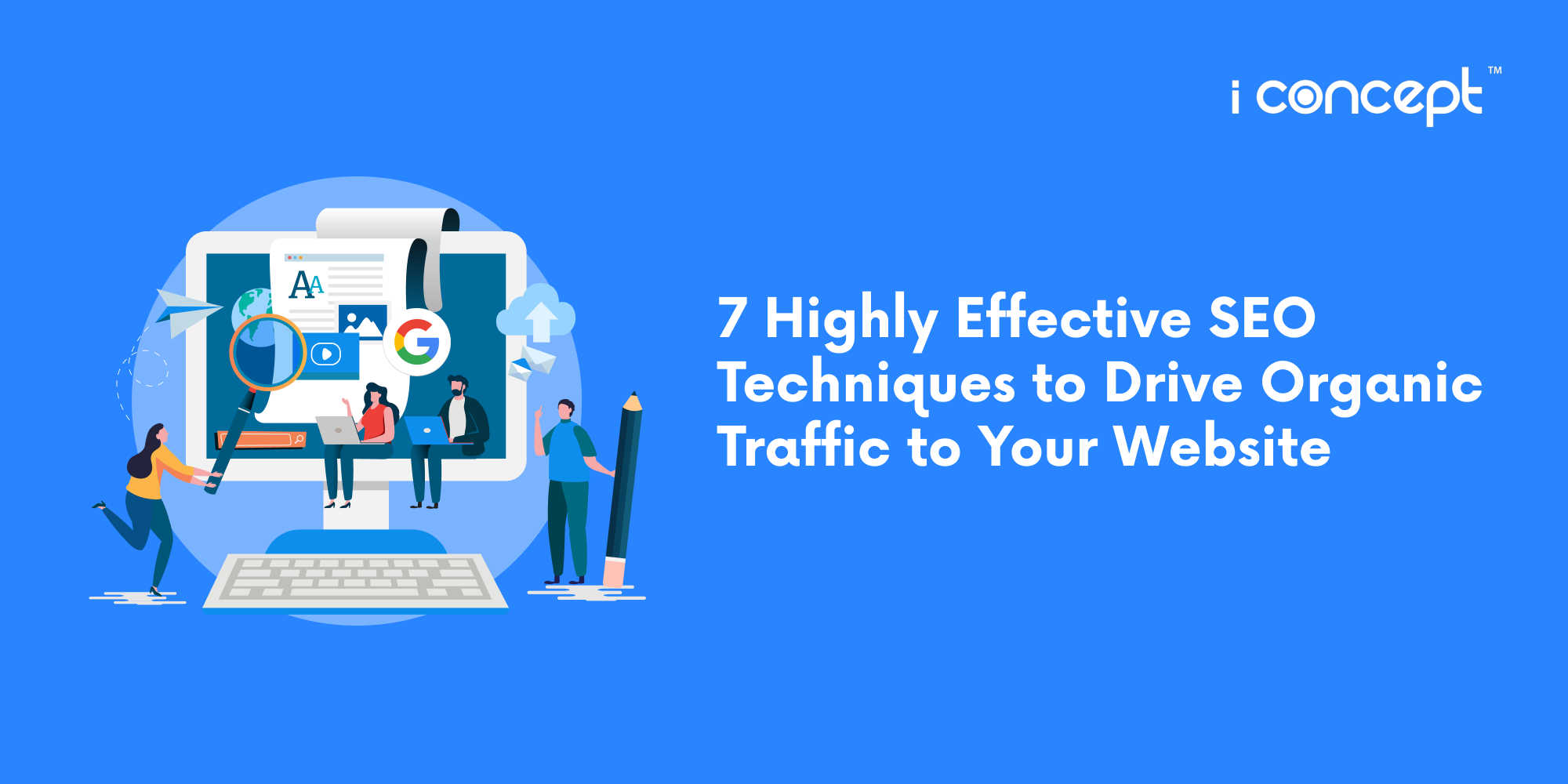Wondering how to appear on Google’s first page? For many businesses, Search Engine Optimisation (SEO) can either be a magic formula, or a magic bullet. They are confused by the complexity of SEO, and the many processes for ranking on search engines are often shrouded in mystery.
SEO should be a prominent component of your overall digital marketing strategy. That’s because it’s one of the key digital solutions for your target audience to find you online. Furthermore, it’s one of the few methods of marketing that provide truly evergreen and long-term results. Great content pages that rank on search engines can bring in traffic to you for many years to come.
Many of your customers are on search engines like Google, looking for answers to their problems, and searching for your solutions. By learning SEO techniques, you will be able to get in front of your target audiences, and win them over. Not to mention, you’re snagging them away from your competitors.
What Does SEO Mean and How Does it Work?
Search engine optimisation (SEO) is explained as the process of improving your website to better position your website on organic search results. Organic traffic is a prominent way for people to discover your business through search queries. Search engines will display the results of relevant pages that fit a user’s query. Good SEO helps increase the quality and quantity of incoming traffic to your website.
Receiving organic traffic that is highly relevant to your business can help bring in many potential customers. How well your website brings in traffic is primarily due to your search ranking position. The higher your page ranks for certain keywords (especially high traffic keywords), the more likely you’ll bring in visitors. That’s because there are 5.6 billion searches on Google every day. Google processes about 63,000 search queries per second.
Search engines like Google use crawlers, bots, and spiders to gather information from your website. They’ll crawl through your website and try to classify information accordingly. The content on your site, structure, links, and images helps the search engine understand what your website or that particular page is about. This process of systematically categorizing your site is called indexing.
When a person types in a query, the search engine utilizes algorithms to pull out what they interpret as the most useful and accurate list of results related to that query. The organic search result may include blog posts, news articles, local business listings, and more. Many ranking factors affect the positioning of your website. It’s important to learn these factors and understand how to leverage them to get your pages on the top of search results.
A good idea for most companies would be to hire an expert, like the team at I Concept, who can provide you with marketing consulting and guide you through the best SEO marketing plans.
SEO Techniques to Increase Organic Traffic
Technology is always advancing. New platforms are appearing, algorithms change, and new tools are being used. Thus, there can be new SEO techniques that come about over time. But the basics of SEO revolve around three ideas:
- Give searchers what they’re looking for and provide them with a good user experience.
- Help Google (or any other search engine) index your information so that they can offer relevant content to searchers.
- Build authority in the eyes of Google so that you’re seen as a trusted source.
Here are 7 effective techniques that aim to do one or more of the above. Incorporate them as your digital solutions in your overall digital marketing efforts.
1. Create Evergreen Content
Evergreen content is those that will always be interesting for the reader. They are timeless since they address topics that are constantly searched by users. These types of posts will always receive high traffic volumes. This means that the more of them you have in your strategy, the better the website (or blog) will perform, in general.
There are some more usual evergreen content formats that you can use with several topics. They include:
- Pros and cons of products or softwares;
- Case studies (dedicated to users or products);
- Checklists;
- Market statistics (these numbers should be periodically reviewed and updated);
- “How to” content;
- Beginner’s guides.
Considering the positive impacts evergreen content can bring to your website, it is recommended to keep searching for new topics that may be timeless to your audience, and have these articles published in a blog section on your website.
2. Create Benefit-Focused Content
Users are looking for solutions to their problems on the web, and the right content can help with this.
They don’t want to know, for example, “What are the 10 best running shoes today”. There are already too many articles about that. It is much more likely that your audience is looking for a product or strategy that solves a specific situation. Therefore, this user must be more interested in something like “increase your running performance with these 10 shoes”.
Content focused on benefits to users is pretty much an answer to what they are looking for. When a post is written around benefits, the chances of attracting more traffic grow considerably. Users already know that in this type of content, they will learn how to get a benefit. So, it’s very likely that they will access the post.
3. Perform a Technical SEO Audit on your Website
An audit is one of the most basic essentials of SEO techniques. This work is focused on detailed analysis in search of optimisations that can be made, or errors to be corrected.
The task is to run a search through your entire website, to check if it fits the main SEO parameters. Some points to check include the use of alternative text for images, URL optimisation, use of meta-descriptions in all contents, broken links, page-loading speed, content optimised for mobile, and possible 404 errors.
It is important to analyse if these parameters are adjusted and being properly accomplished. If you find problems, you will understand why your content may not be ranking well and driving traffic.
4. Use Titles that Generate Interest
Digital copywriting is also a valuable SEO technique if used properly. Titles need to be written based on this technique, especially when they include keywords.
Titles need to be appealing, always focused on delivering something valuable to the user. For example, if your audience wants to know how to create amazing content for YouTube, your post’s title must show that, by reading your content, the reader will achieve this goal. In this example, a title capable of generating interest would be something like: “Reach millions of views: Learn how to create the perfect video content!”
It is essential to know that an attractive title is not enough. Your post must carry relevant content, and fulfill the proposed promise for the text. Otherwise, you will frustrate your audience.
5. Link to Websites with Authority
Backlinks are an essential part of any SEO strategy. The more backlinks there are on your website, the better.
Apart from quantity, it is necessary to have quality links, meaning that you need links from websites with good authority. These sites usually have high traffic volume, and that is why they are considered to have authority. Of course, if your content links to them, Google will also recognise it is a relevant page.
Remember that links need to make sense considering your strategy. It’s essential to link only for pages that are related to your website (or blog) and its content. Any backlinks that don’t follow these guidelines can generate a bad perception about your website. Search engines may penalise you for inappropriate practice.
6. Adapt Content to Mobile
Over 50% of web traffic comes from mobile today. This means that at least half of your audience is accessing your website using a smartphone or tablet.
The user experience needs to be flawless. Otherwise, search engines like Google may penalise your content. That is why optimising for mobile is critical.
The work begins with your website. It needs to be responsive, ensuring that content is viewed without any problems when accessed by mobile devices. Sites that experience failures when accessed on smartphones would not rank well. Consequently, traffic to your website will tend to drop significantly.
7. Update Old Blog Posts
Old posts and content already on your website can still earn good positions on Search Engine Results Page (SERPs).
Updating content is one of the easiest ways to get well-ranked pages and posts without starting from scratch.
A good digital copywriting practice is always to produce evergreen content rather than news content. That’s because evergreen pieces last longer, are always relevant to the public, and you can update them whenever you have more information on the subject.
To optimise your post’s performance, search for new keywords related to the piece that will be updated. You can also add visual content to the piece, like videos, infographics, images, etc.
When updating posts, you take advantage of content that already has authority on the web, which equates to a higher potential to generate more traffic.
Getting the Help on SEO with I Concept
Does all these optimising matters still sound foreign to you, and you’re considering enlisting the professional help of people in the know? If you are on the hunt for all-round digital solutions, you should be in contact with I Concept Singapore today.
We’re a top creative agency Singapore, offering a range of digital marketing solutions, from website and e-commerce store design, and digital marketing (including Search Engine Optimisation and digital copywriting). Speak with us today!










